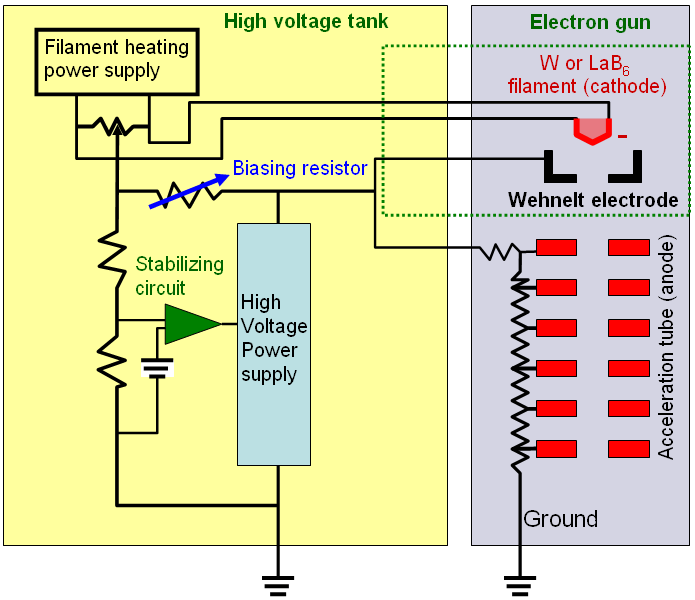=================================================================================
Figure 4229a shows an example of computer-controlled SEM systems. In all EMs (electron microscopes), anode is controlled by an electron-gun high-voltage power supply, providing the accelerating voltage to form the electron probe.

Figure 4229a. Example of computer-controlled EMs: SEM system.
Figure 4229b shows the schematic illustration of the more detailed electric circuit of thermionic electron guns with tungsten and LaB6 filaments.

Figure 4229b. Schematic illustration of the electric circuit of thermionic electron guns with tungsten and LaB6 filaments. The variation of the high voltage generated for electron microscopes (especially TEMs) should be kept as small as possible because it induces defocusing of EM images due to the chromatic aberrations. In order to avoid degrading high voltage stability through stray electromagnetic fields, especially for a TEM system, a shielding box and shock absorbers for the microscope’s high-voltage tank can be installed.
The high-tension power supply and beam-current in modern electron microscopes can achieve 10-7 stability so that the main source of the chromatic aberration is due to energy spread of the electrons within the probe.
|

